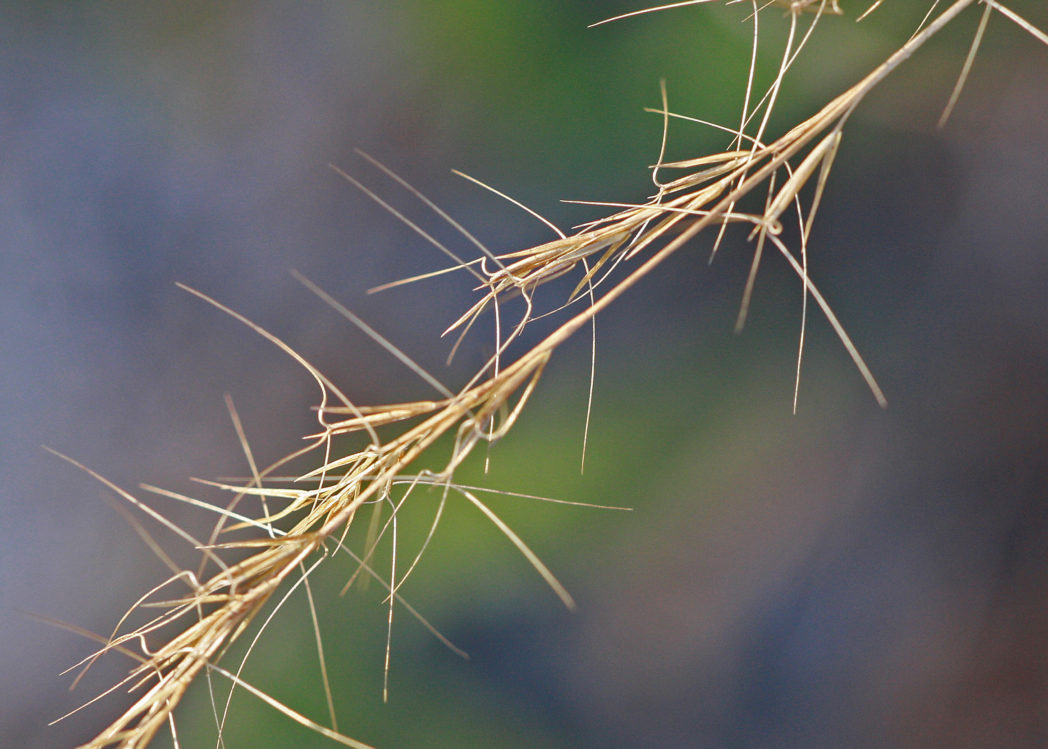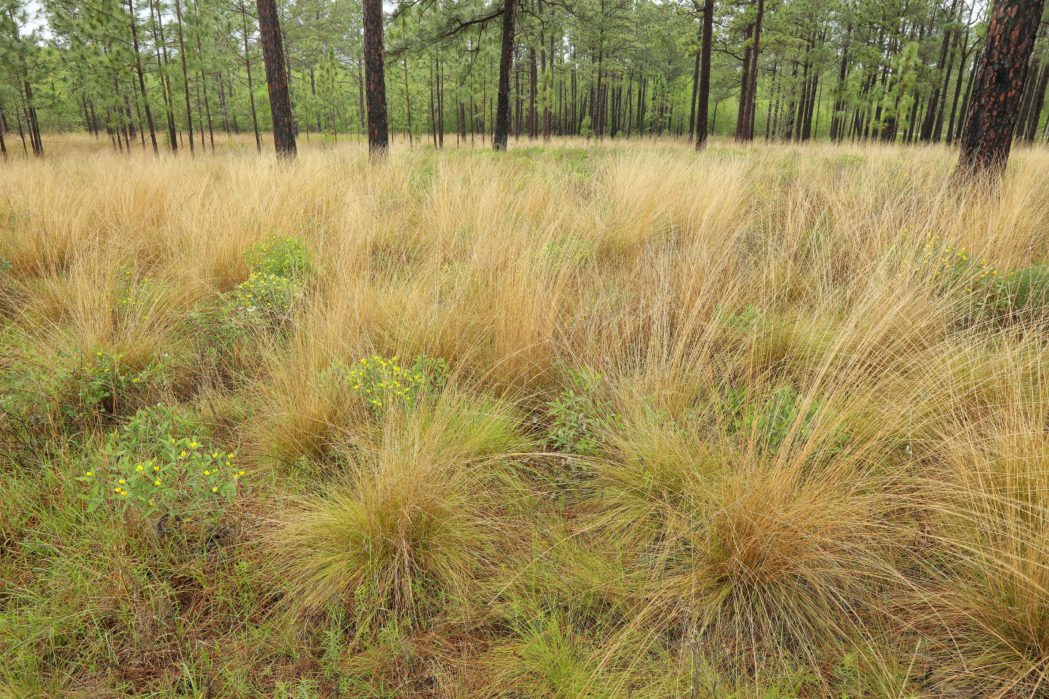Wiregrass
Pictured above: Wiregrass (Aristida stricta) by Alan Cressler, courtesy of Lady Bird Johnson Wildflower Center. Click on terms for botanical definitions. View post as a PDF.
Wiregrass is a perennial bunchgrass found in scrub, pinelands and coastal uplands throughout much of Florida. It is the dominant groundcover species in longleaf pine savannas and is a primary food source for gopher tortoises. Birds and small wildlife eat the seeds. Historically, cattle grazed on Wiregrass’s tender new growth.
Wiregrass flowers are tiny and brown. They are born on spikelike terminal racemes. Flower stalks are elongated and extend above the leaves. Leaf blades are long, thin and rolled inward, giving them a wiry appearance (hence the common name). They are erect and green when young and begin to arch and turn brown as they age. Its fruits are small, yellowish caryopses. Seeds may be dispersed by wind, gravity or on the fur of passing animals.
The genus name Aristida is from the Latin arista, meaning “awn” and referring to the three awns or bristle-like structures that extend from the florets. (An alternative common name is Pineland threeawn.) The species epithet, stricta, is from the Latin strictus, meaning “straight” or “erect.”

Family: Poaceae (Grass family)
Native range: Nearly throughout
To see where natural populations of Wiregrass have been vouchered, visit florida.plantatlas.usf.edu.
Hardiness: Zones 8A–10B
Lifespan: Perennial
Soil: Moist to very dry, well-drained sandy soils
Exposure: Full sun to partial shade
Growth habit: 1–3’+ tall and equally wide
Propagation: Division, seed
Garden tips: Wiregrass is fast-growing and tolerant of drought conditions and low-nutrient soils. It is best suited for naturalistic landscapes and uplands restoration projects, however, individual specimens can easily be incorporated into a home wildflower garden. Its clump-forming habit makes it a good choice for a border or edge planting. The plant is fire-dependent, meaning it requires regular exposure to fire to stimulate flower and seed production. New leaf growth can be stimulated by cutting back old or dead foliage.
Wiregrass plants are often available from nurseries that specialize in Florida native plants. Visit www.PlantRealFlorida.org to find a nursery in your area. Seeds are available through the Florida Wildflowers Growers Cooperative at www.FloridaWildflowers.com.

